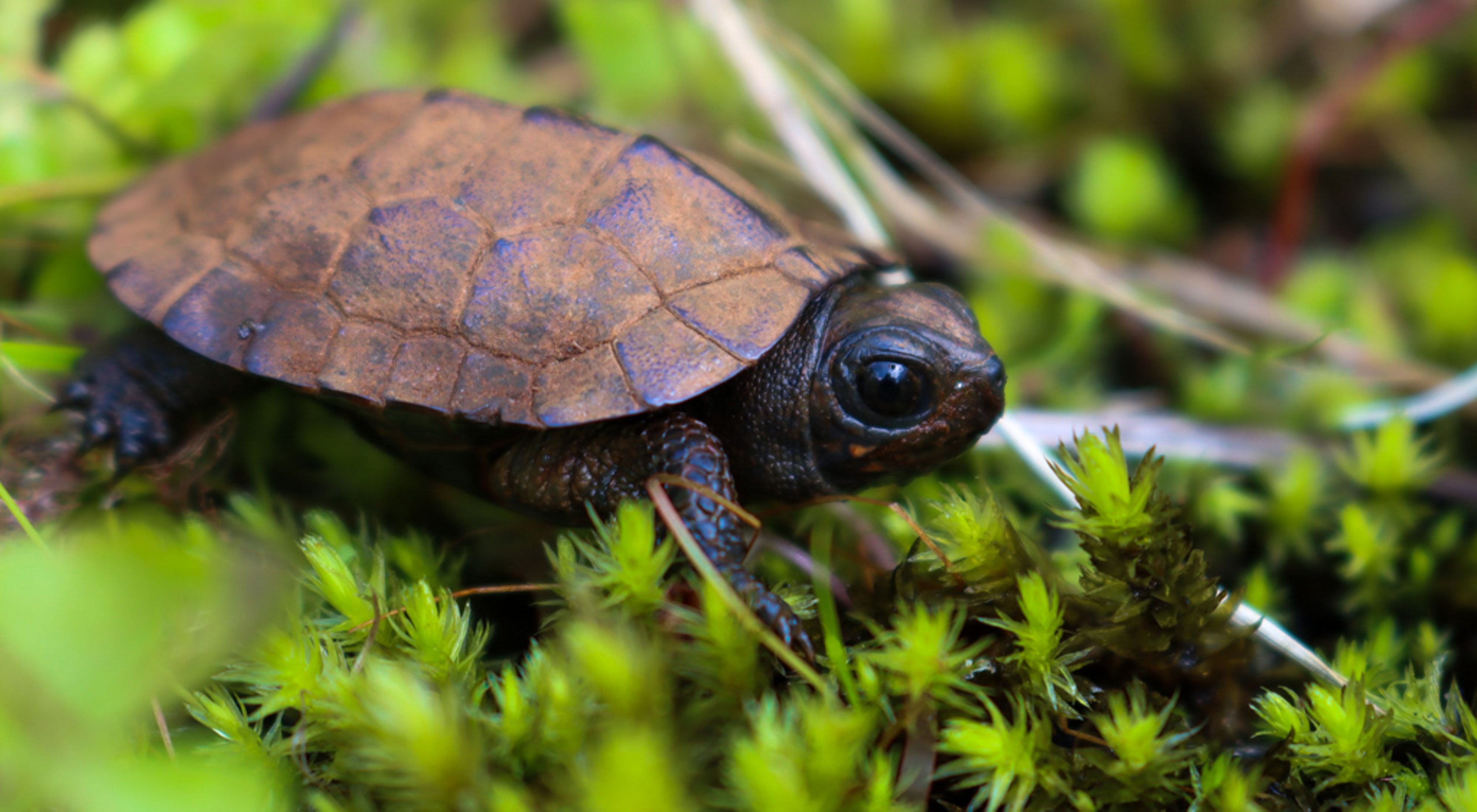
Like the bog turtle itself, bog turtle populations in North Carolina are very small. A collaborative effort between multiple conservation organizations hopes to change that by giving them a little help. Last June, the N.C. Wildlife Resources Commission, The Nature Conservancy (TNC), U.S. Fish and Wildlife Service, Tangled Bank Conservation and Zoo Knoxville began a population augmentation process called head-starting. Head-starting involves raising turtles in captivity their first year to increase their size relative to wild hatchlings, thereby increasing their chances of survival in the wild upon release.
Head-starting is part of a much larger conservation effort for the bog turtle that includes habitat management and restoration, protection from unnaturally high-predation levels, collaboration with private landowners, addressing road mortality and land protection. Despite all these efforts, most populations are still in decline, and many have only a few adults remaining and even fewer or no young turtles, which is what prompted the Wildlife Commission to consider augmenting populations.
“Head-starting is one of many tools in the conservation toolbox for the bog turtle,” stated Gabrielle Graeter, a conservation biologist with the Wildlife Commission. “Wildlife biologists hope the new initiative will help bog turtles be able to one day thrive on their own.”
Head-Starting Bog Turtle Populations






In June 2021, over 50 turtle eggs were retrieved from collection sites and transported to Zoo Knoxville to begin the head-starting process. Zookeepers incubated the eggs until the hatchlings emerged in August, then reared the baby turtles for 10 months.
Zoo Knoxville has a long legacy with bog turtle conservation, beginning in 1986 after the late Bern Tryon, then director of herpetology, pioneered the head-starting program when they were discovered in Tennessee. Since then, Zoo Knoxville has been part of the reintroduction of more than 200 bog turtles into their native range. In 2021, Zoo Knoxville opened a state-of-the-art Amphibian and Reptile Conservation Campus (ARC), with a dedicated bio-secure room for the rearing of turtles slated for release.
“As a modern zoo, it’s our job to do all we can to contribute to the conservation of our most endangered species,” said Michael Ogle, Zoo Knoxville’s curator of herpetology. “We are proud we could be a partner to ensuring a future for bog turtles in North Carolina.”
This summer, wildlife biologists from the Wildlife Commission returned the turtles to the native habitats where they were collected as eggs. It was a special day, as baby turtles scampered away into the cool mud. Around the same time this summer, about 70 more eggs were collected to continue the head-starting process.

“Mountain bogs are rare ecosystems but are home to a number of rare species,” said Adam Warwick, TNC’s mountain stewardship coordinator. “There are very few mountain bogs today – likely just tenth of what there was before European settlement. That’s why TNC protects, restores, and manages mountain bogs. Bog turtles are especially imperiled because they take six to seven years to reproduce and then only produce a small number of eggs. Turtle head-starting is an important component of TNC’s mountain bog work.”
Wildlife Commission staff are collecting data and closely monitoring the success of the program.
“Over time, as we evaluate this project, we will learn more about the utility of head-starting with bog turtles and when it is most appropriate,” said Graeter. “As we learn more, we will adjust our methods to ensure this project aligns with the state’s conservation goals for the species. I am grateful to all the partners that have come together to help make this project happen!”
To fully evaluate the success of this project, monitoring will continue for decades due to how long it takes for the species to reach sexual maturity. It will be a marathon effort, but one this group is committed to seeing through.

The Nature Conservancy is a global conservation organization dedicated to conserving the lands and waters on which all life depends. Guided by science, we create innovative, on-the-ground solutions to our world’s toughest challenges so that nature and people can thrive together. We are tackling climate change, conserving lands, waters and oceans at an unprecedented scale, providing food and water sustainably and helping make cities more sustainable. The Nature Conservancy is working to make a lasting difference around the world in 77 countries and territories (41 by direct conservation impact and 36 through partners) through a collaborative approach that engages local communities, governments, the private sector, and other partners. To learn more, visit nature.org or follow @nature_press on X.
